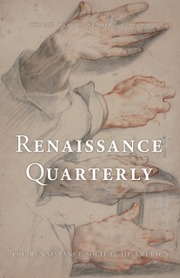In Shaping the Stranger Churches, Silke Muylaert lends fresh nuance to the ongoing scholarly discussion of Dutch, French, Walloon, and Italian churches throughout Tudor England. How did such communities, especially the Dutch communities of London, Sandwich, and Norwich, address the mounting demands of William of Orange’s campaign in the Low Countries? How did they navigate their position as foreign subjects of the English Crown, often balancing Presbyterian sensibilities with a desire to maintain conformist identity under the bishop? The answer, according to Muylaert, is not simple. Even where sources are readily available to the social historian, one encounters ambivalence, unease, and conflicting motives.
Still, by taking a comparative approach, Muylaert’s book settles on two significant themes, which, in some cases, might have been further drawn out to the reader’s satisfaction. First, as a block, the stranger churches in England were less radical, less militant, and more “diplomatically moderate” than a raft of earlier historians have acknowledged (154). Moderation could be both practical and religious. On the one hand, churches were cognizant of the English queen’s ever-evolving postures toward Orange, Philip II, and the Duke of Alba and had no desire to make waves, even as they negotiated with the conflicting desires of their members. On the other hand, moderation reflected a broader commitment to obedience and a magisterial distaste for iconoclasm, prison-breaking, and armed resistance to secular authority. Chapters 1 and 3 deftly engage with the evangelical and Reformed principles of Luther, Calvin, and à Lasco to flesh out this religious worldview—although Tyndale’s contribution to the theological discourse on obedience is notably absent.
Second, the English stranger churches were often hampered from vigorously supporting the Dutch Revolt by material considerations at home. Chapters 5 and 6 of Muylaert’s work excel in reading primary material against the grain of previous scholarship to highlight those areas where English stranger churches withheld full-throated support. “Help,” concludes Muylaert, “turned out to be disappointingly meager” (175). Donations to the cause often fell short of Orange’s expectations, prompting him to continually push against claims that sufficient funds were unavailable. But members were poor, and the Dutch consistory in particular struggled to sustain congregations in the face of declining membership and the costly demands of training qualified ministers. In the final analysis, the stranger churches supported the Low Countries simply by continuing to exist as a haven for wartime refugees and as a partner for struggling congregations across the channel.
Shaping the Stranger Churches deepens the complex picture already present in local studies by scholars like Andrew Spicer, Marcel Backhouse, and Andrew Pettegree. Readers will no doubt appreciate the comprehensiveness of this new volume, which covers numerous congregations during the reign of three Tudor monarchs in a surprisingly orderly and accessible fashion. The march of the narrative and the overriding focus on the consistory occasionally comes at the expense of dwelling on the lives of individual Christians, the sort of detail that adds color, for example, to Pettegree’s work on London. There is, to be fair, some of this. I relished reading about the ne’er-do-well minister Abraham Bauters who, hoping to relocate to Emden, elicited an eloquent rebuke rather than typical attestation from the consistory (218). The case of the Artesian minister Adrian Saravia also provides a compelling illustration near the end of the book of the ideological acrobatics involved in conformity to the episcopal system in England, the Pauline emphasis on decency and proper order, and the wartime demands of William of Orange.
Beyond its clear appeal to historians already involved with the plight of the stranger churches, Muylaert’s work will likely also engage cultural and intellectual historians further afield. Those interested in the performance of moderation will certainly appreciate Muylaert’s detailed portrait of the consistory. Her observation, for example, that the London Dutch Church did not shy from “using coercion to enforce its policy of moderation” nicely complements Ethan Shagan’s discussion of Puritan moderation (102). Muylaert’s final chapter also acknowledges the broader context of the Admonition Controversy and its aftermath in English intellectual life. Indeed, the tangled influence of native theologians like John Whitgift and Thomas Cartwright on the stranger churches’ evolving religious views is a topic that hovers in the background of Muylaert’s work and deserves further attention.


